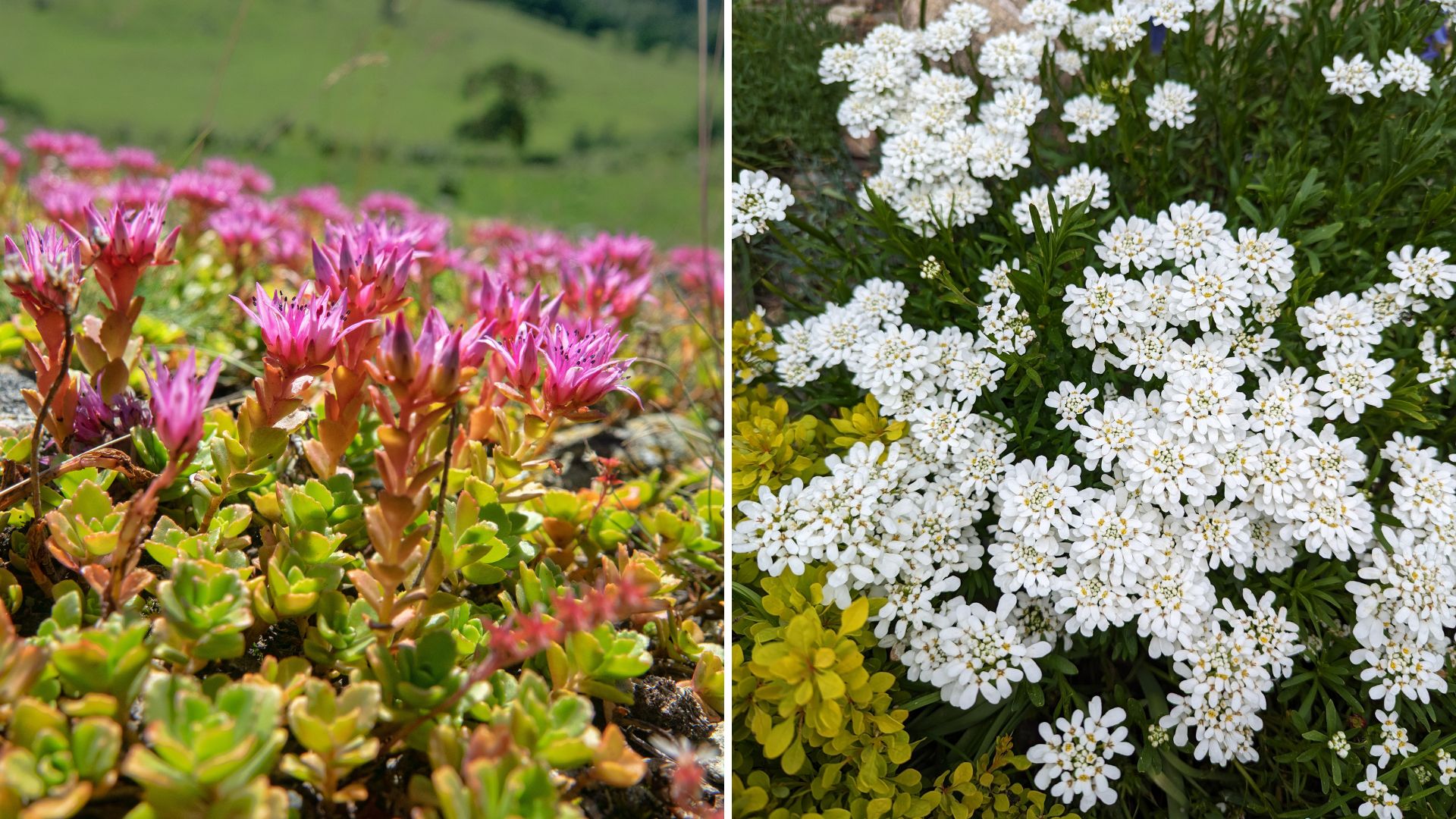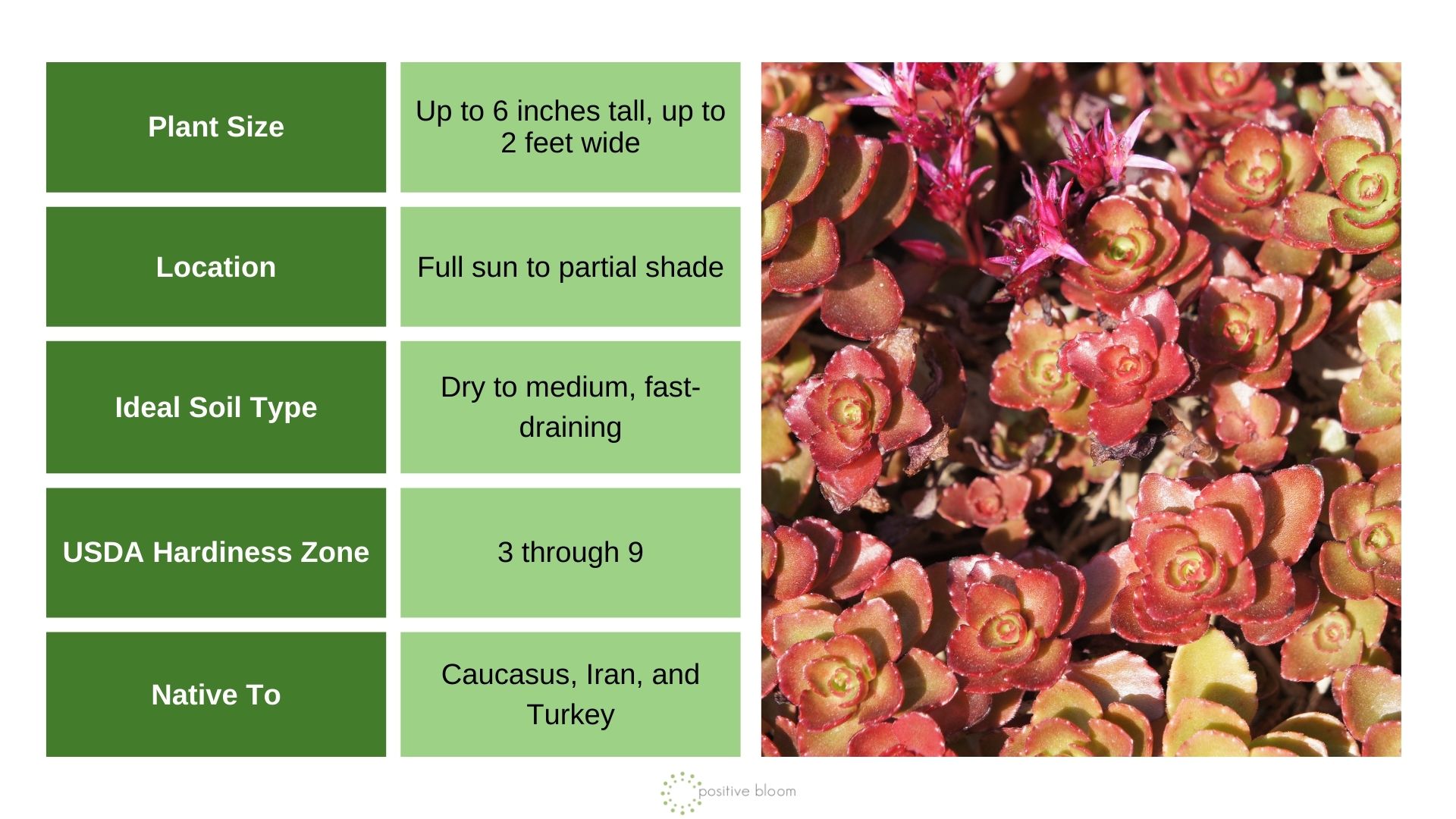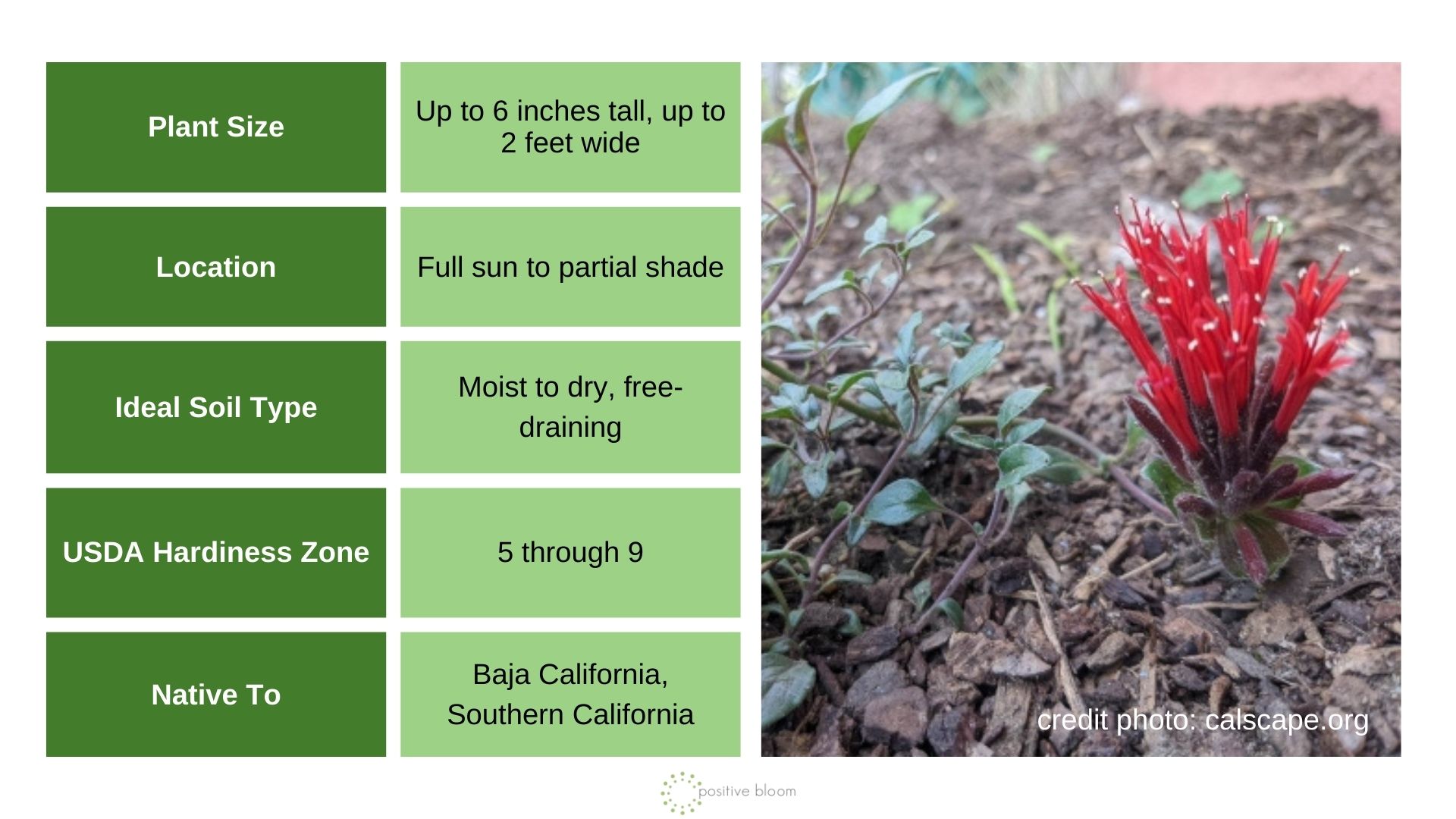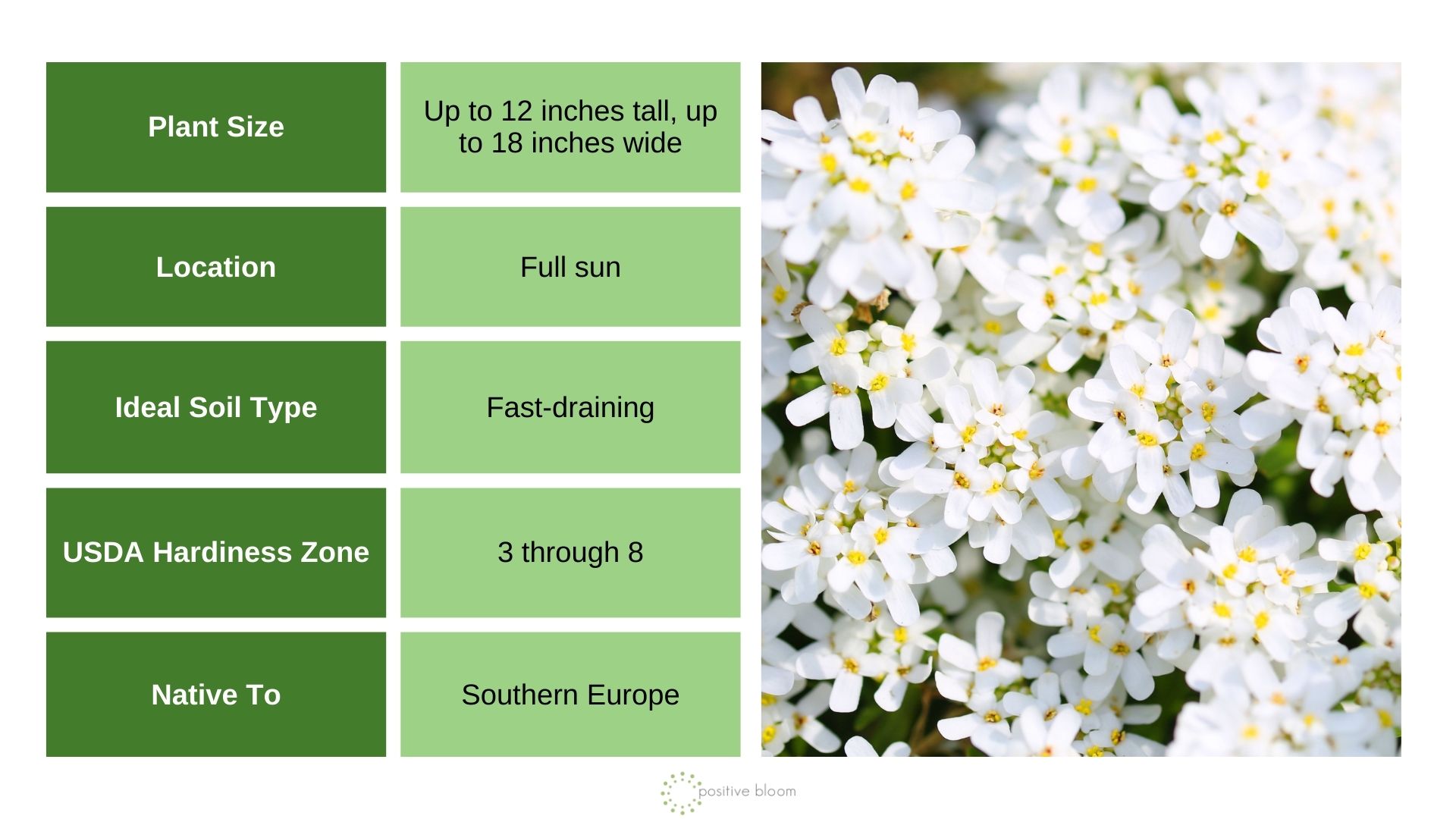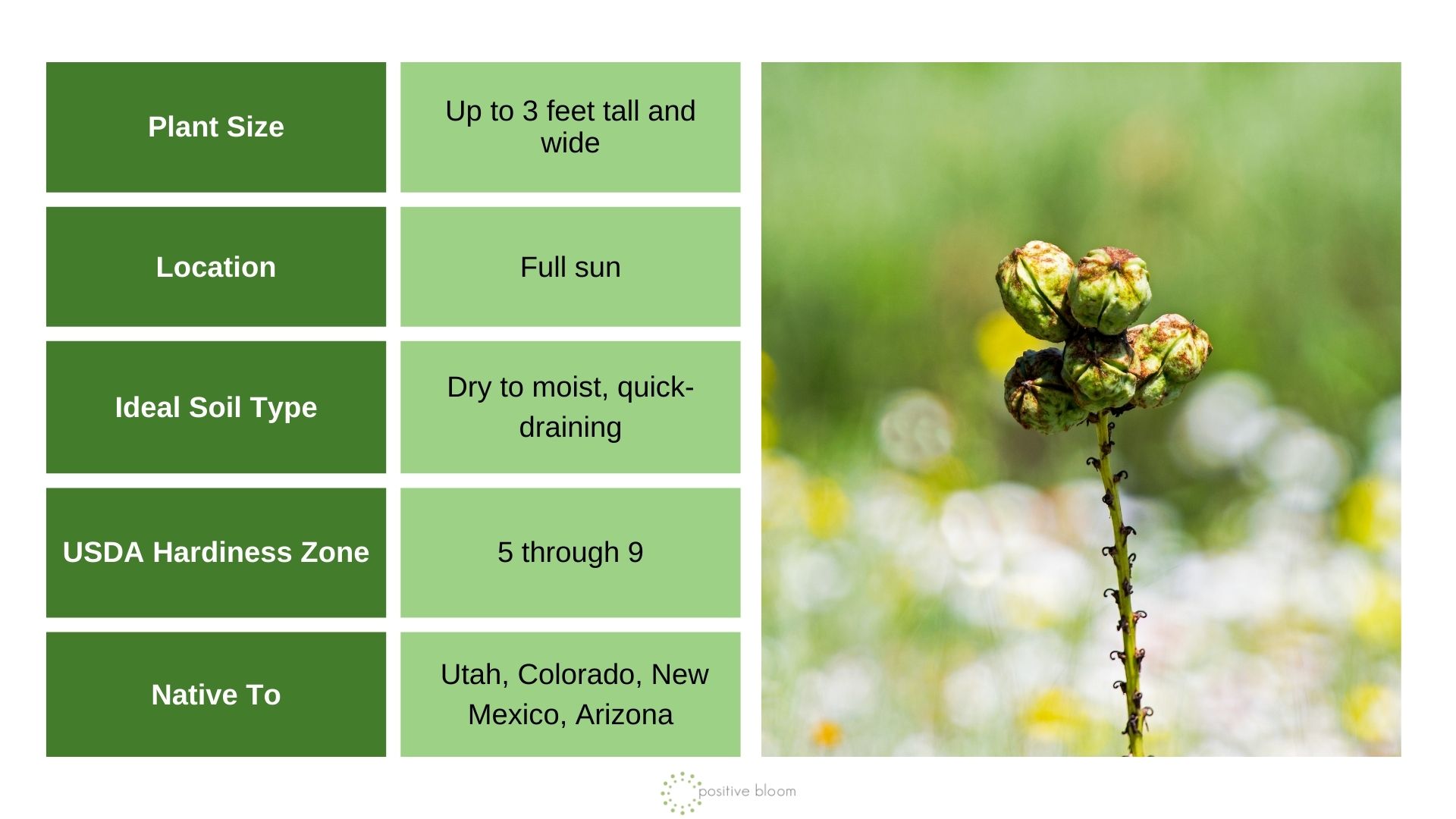Choosing plants for landscaping can be challenging for those who live in the Mountain West. The weather conditions in this region are pretty adverse, which means you need to select hardier plants.
The good news is that there are some spectacular species that thrive in such conditions. And guess what? There are even some perennials that’ll come back every year.
In this article, I’ll show you my top picks of evergreen perennials for the Mountain West and give you some tried-and-true maintenance tips!
Let’s get started!
1. ‘Dragon’s Blood’ Caucasian Sedum
The first plant on my list is the Dragon’s Blood, a fast-growing species from the Sedum genus. This captivating and versatile succulent can be used as a ground cover, specimen plant, or for mass planting.
The leaves are bright green and they’re adorned with fascinating burgundy edges. The best thing about Dragon’s Blood is that it will retain its red color even during the winter.
But that’s not all! When the summer approaches, you’ll be rewarded with splendid starry red blossoms that grow in clusters.
The Caucasian Sedum plant doesn’t need much to thrive; give it some sun and plant it in a porous soil and it will grow healthy for many years to come.
It’s a drought-tolerant plant and is an excellent choice for beginners. Additionally, you don’t need to worry about deer and rabbits because these animals aren’t fans of sedums in general.
2. ‘Marian Sampson’ Hummingbird Coyote Mint
If you prefer fragrant plants, then Marian Sampson is a perfect choice. This splendid semi-evergreen perennial thrives in conditions found in the Rocky Mountain region.
The deep green leaves of Marian Sampson form a dense mat over the ground, which will elevate your outdoor space design.
But that’s not the best feature of this species. In late spring, it generates bright red, tubular blossoms that develop into clusters. Hummingbirds adore these blossoms and will definitely pay a visit to your garden.
You can grow this plant in your rocky garden and it performs well in gravel mulch.
When selecting a spot for your Marian Sampson, make sure to place it next to large rocks to protect it from harsh sun rays during summer.
Even though this Mountain West plant is considered drought-resistant, I recommend supplemental irrigation during hot summer days.
3. ‘Purity’ Candytuft
As sweet as candy! OK, the plant isn’t edible but it looks adorable. Candytuft Purity is renowned for its magnificent clusters of small white blossoms that appear in spring.
You can extend the blooming season and keep the Purity’s appearance neat by deadheading the blossoms.
There’s one thing with the candytuft you need to be careful about; it’s highly susceptible to root rot disease. Prevent this disease by planting your Purity plant in a free-draining soil type.
These plants are considered perennials but sometimes harsh winters cause sunscald and the plant loses its original colors.
If this happens to your Purity candytuft, cut it back to green growth when the spring approaches. Don’t worry, it will display new growth in no time.
You can combine it with various plants but, for me, the Narrowleaf yucca makes one of the best Dusty miller companions!
4. Narrowleaf Yucca
The slender, architectural leaves of this yucca variety will add a special touch of beauty to your landscape.
The flower spikes can reach 7 feet and they’re adorned with white or creamy bell-shaped blossoms.
This yucca requires minimal care and is an excellent choice if you’re into xeriscaping. It’s highly adaptable to arid and semi-arid conditions and can withstand periods of drought.
Narrowleaf yucca tolerates cooler temperatures, making it a perfect plant for Mountain West gardens.
If you live in the Mountain West, add at least one of these plants to your landscape and enjoy their magical beauty!

